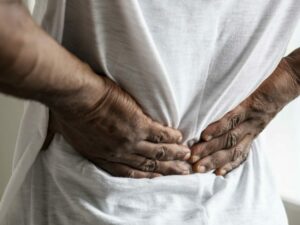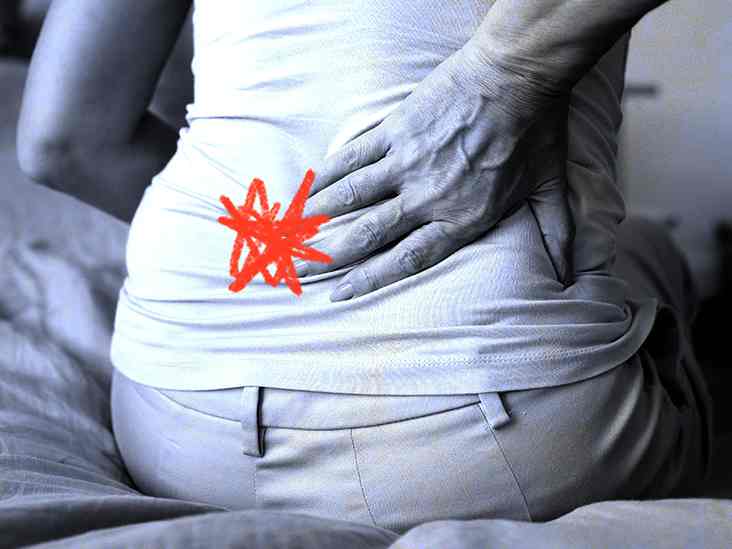Do you wake up in the morning with a stiff and aching back? If so, you’re not alone. Many people experience lower back pain in the morning. In this blog post, we will discuss the causes of lower back pain in the morning and some treatment options.
Lower Back Pain In The Morning

Lower back pain in the morning is a common problem. It can be caused by several factors, including poor posture, sleeping in an uncomfortable position, and muscular imbalance. Treatment options vary depending on the cause of the pain but may include stretching exercises, massage, and over-the-counter medication. In severe cases, surgery may be necessary.
It is a condition that can be very painful and debilitating.
There are several possible causes of lower back pain in the morning. Poor posture is one of the most common causes. If you sleep in an uncomfortable position, it can also lead to morning back pain. Muscular imbalance is another possible cause.
Causes

There are various causes of lower back pain. They are included as follows:
Muscle strain
This is the most common cause of lower back pain. It occurs when the muscles in your back are stretched beyond their limit or overused. This often happens during activities that involve lifting, twisting, or jerking motions.
Herniated disk
Also called a slipped disk, this occurs when one of the cushions between your vertebrae ruptures or breaks. The cushion is like a shock absorber that helps keep your spine flexible. When it’s herniated, the gel-like center leaks out and puts pressure on the nearby nerves.
Degenerative disk disease
This is a condition that causes the disks in your spine to break down. As you age, the disks lose water and become less flexible. This can lead to pain and stiffness.
Spinal stenosis
This is a condition that causes the space around your spinal cord to narrow. It can put pressure on the nerves in your spine and cause pain.
Osteoarthritis
This is a condition that causes the cartilage in your joints to break down. It can affect any joint in your body, but it’s most common in the spine.
Sciatica
This is a condition that occurs when the sciatic nerve, which runs from your lower back to your legs, is compressed. This can cause pain, numbness, and tingling in your legs.
Fibromyalgia
This is a condition that causes widespread pain and stiffness in the muscles and joints. It can also cause fatigue and sleep problems.
Pregnancy
This is a common cause of lower back pain in women. It’s caused by the extra weight of the baby and the changes in your posture and hormones.
Kidney stones
This is a condition that occurs when there are small, hard deposits in the kidney. They can cause pain when they pass through the urinary system.
Infection
This is a rare cause of lower back pain. It can be caused by an infection in the spine or surrounding tissues.
Treatment

There are various treatments for lower back pain. They are as follows:
Heat and ice therapy
This involves applying ice to the inflamed area for 20 minutes followed by heat therapy for the next 20 minutes. This process is repeated 3-4 times a day.
Manipulation
Manipulation is a treatment where the doctor uses his or her hands to move the joints and muscles around to relieve pain. For instance, if you have a herniated disc, your doctor may use manipulation to reduce the pressure on the nerve that is causing pain.
Exercise
Exercise is a vital part of treatment for lower back pain. It helps to strengthen the muscles and keep them flexible. It is important to keep the back muscles strong and flexible. A physical therapist can guide you with specific exercises. These are as follows:
a. Stretches: Regular stretching helps to lengthen the muscles and relieve tension.
b. Strengthening exercises: These help to build up the muscles surrounding the spine and enable them to better support the back.
c. Low-impact aerobics: This helps to increase blood flow and reduce inflammation.
Medications
There are a variety of medications that can be used to treat lower back pain. These include over-the-counter pain relievers, such as ibuprofen and acetaminophen. Prescription medications may also be necessary in some cases. These include muscle relaxants, anti-inflammatories, and opioids.
Surgery
In some cases, surgery may be necessary to correct the problem that is causing lower back pain. For instance, if you have a herniated disc, your doctor may recommend surgery to remove the disc and relieve the pressure on your spine.
Physical therapy
A physical therapist can help you strengthen the muscles in your back and teach you exercises to help reduce pain and improve your range of motion. For instance, one study found that people with chronic low back pain who took part in an eight-week exercise program had significantly less pain and disability compared to those who did not participate in the program.
Chiropractic care
A chiropractor can help align your spine and provide relief from pain by manipulating the joints. For instance, a study published in the Journal of Manipulative and Physiological Therapeutics found that chiropractic adjustments helped reduce morning stiffness and pain in people with osteoarthritis of the spine.
Acupuncture
This ancient Chinese healing practice involves inserting thin needles into the skin at specific points on the body. Some people find that acupuncture helps relieve lower back pain. For example, a small study published in 2016 found that acupuncture was effective at relieving pain and improving function in people with chronic low back pain.
Massage
Massage can help relax the muscles in your back and provide relief from pain. The therapy can help to relax the muscles and release tension from the back. For example, a study found that massage therapy was effective in reducing pain and improving function in people with chronic low back pain. Like acupuncture, massage therapy may help relieve some types of chronic low back pain. A 2017 review of studies concluded that Massage therapy may be beneficial for people with acute, subacute, and chronic low back pain.
Yoga
Yoga is a mind-body practice that combines physical poses, controlled breathing, and meditation or relaxation. yoga can help to improve flexibility, strength, and range of motion in the back. It may also help to relieve pain and improve function. A 2016 review of studies found
If you are suffering from lower back pain, it is important to see a doctor so that the proper diagnosis and treatment can be given. There are many different options available, so there is sure to be a treatment that will work for you.
Conclusion
It may be concluded that lower back pain in the morning is a common problem. It can be caused by several factors, including poor posture, sleeping in an uncomfortable position, and muscular imbalance. Treatment options vary depending on the cause of the pain but may include stretching exercises, massage, and over-the-counter medication. In severe cases, surgery may be necessary.
Physical Therapy help patients recover from pain. If you’re experiencing Back pain, Shoulder pain, Knee pain, Neck pain, Elbow pain, Hip pain, or Arthritis pain, a physical therapist at MantraCare can help: Book a physiotherapy session.


